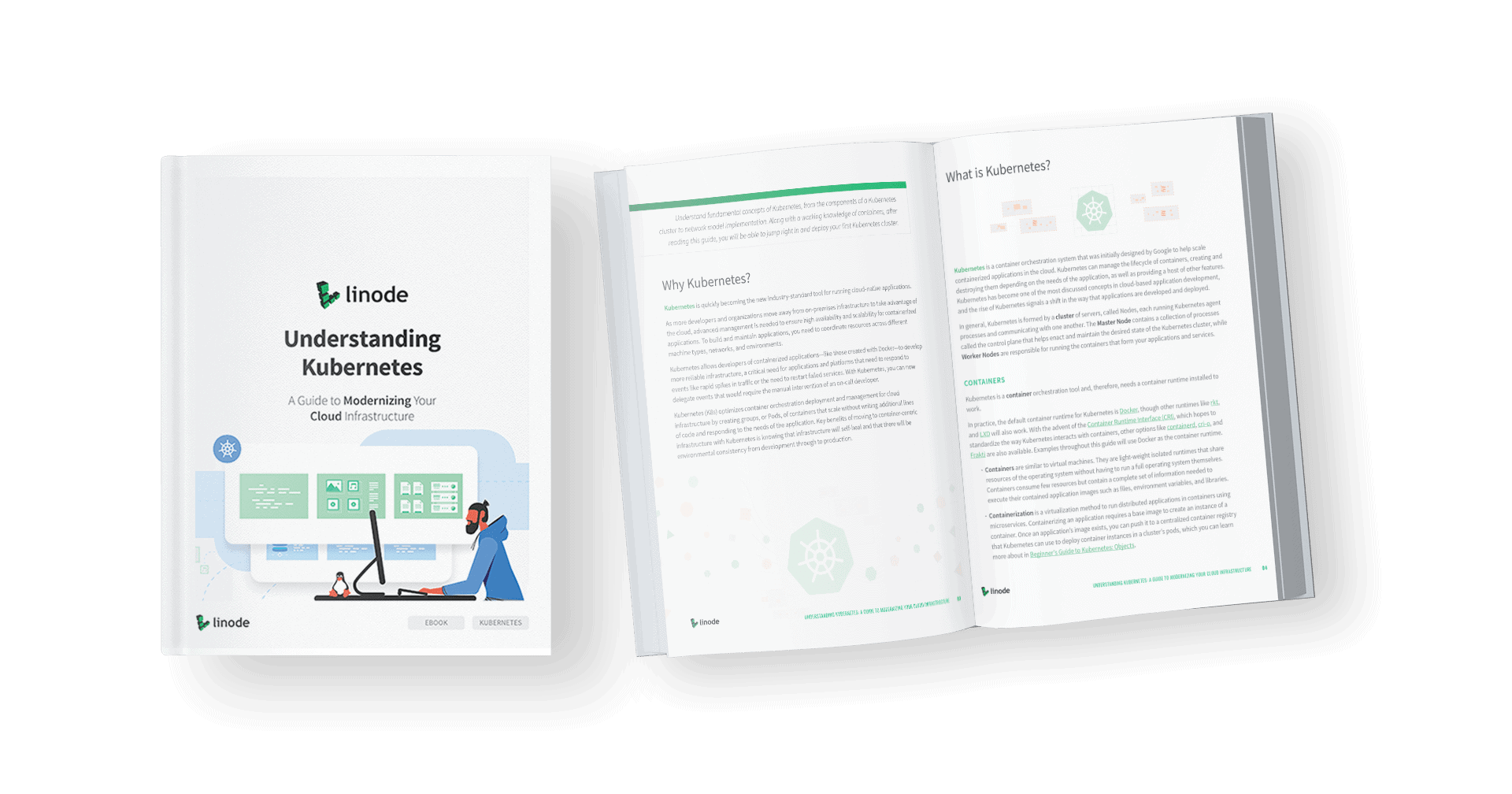

Understanding Kubernetes | Linode
source link: https://www.linode.com/content/kubernetes-guide/?utm_campaign=podcast-changelog-changelog-newsletter
Go to the source link to view the article. You can view the picture content, updated content and better typesetting reading experience. If the link is broken, please click the button below to view the snapshot at that time.
Inside this Guide
Learn fundamental concepts of Kubernetes, from the components of a Kubernetes cluster to network model implementation. After reading this guide, you’ll have a working knowledge of containers and be able to jump right in and deploy your first Kubernetes cluster. This free guide is available as an instant download with no registration required.

You will learn:
What is Kubernetes?
Kubernetes can manage the lifecycle of containers, creating and destroying them depending on the needs of the application, as well as providing a host of other features. It has become one of the most discussed concepts in cloud-based application development, and the rise of Kubernetes signals a shift in the way that applications are developed and deployed.
Master, Nodes, and the Control Plane
For a Kubernetes cluster to maintain homeostasis for your application, it requires a central source of communications and commands. Master, Nodes, and Control Plane are essential components. The Control Plane refers to functions that make decisions about cluster maintenance, whereas the Master is what you interact with on the command-line to assess your cluster’s state.
Objects
In the Kubernetes API, four basic Kubernetes objects: Pods, Services, Volumes, and Namespaces represent the abstractions that communicate what your cluster is doing. These objects describe what containerized applications are running, the nodes they are running on, available resources, and more.
Controllers
A Controller is a control loop that continuously watches the Kubernetes API and tries to manage the desired state of certain aspects of the cluster. Here are short references of the most popular controllers.
Networking
Networking in Kubernetes makes it simple to port existing apps from VMs to containers, and subsequently, Pods. Though the rules of the Kubernetes networking model are simple, the implementation of those rules is an advanced topic.
Our Take
Linode Kubernetes Engine is designed to work for developers who are ready to use Kubernetes for production workloads with efficient and affordable resources, as well as developers who are exploring how it will work for them.
Recommend
About Joyk
Aggregate valuable and interesting links.
Joyk means Joy of geeK